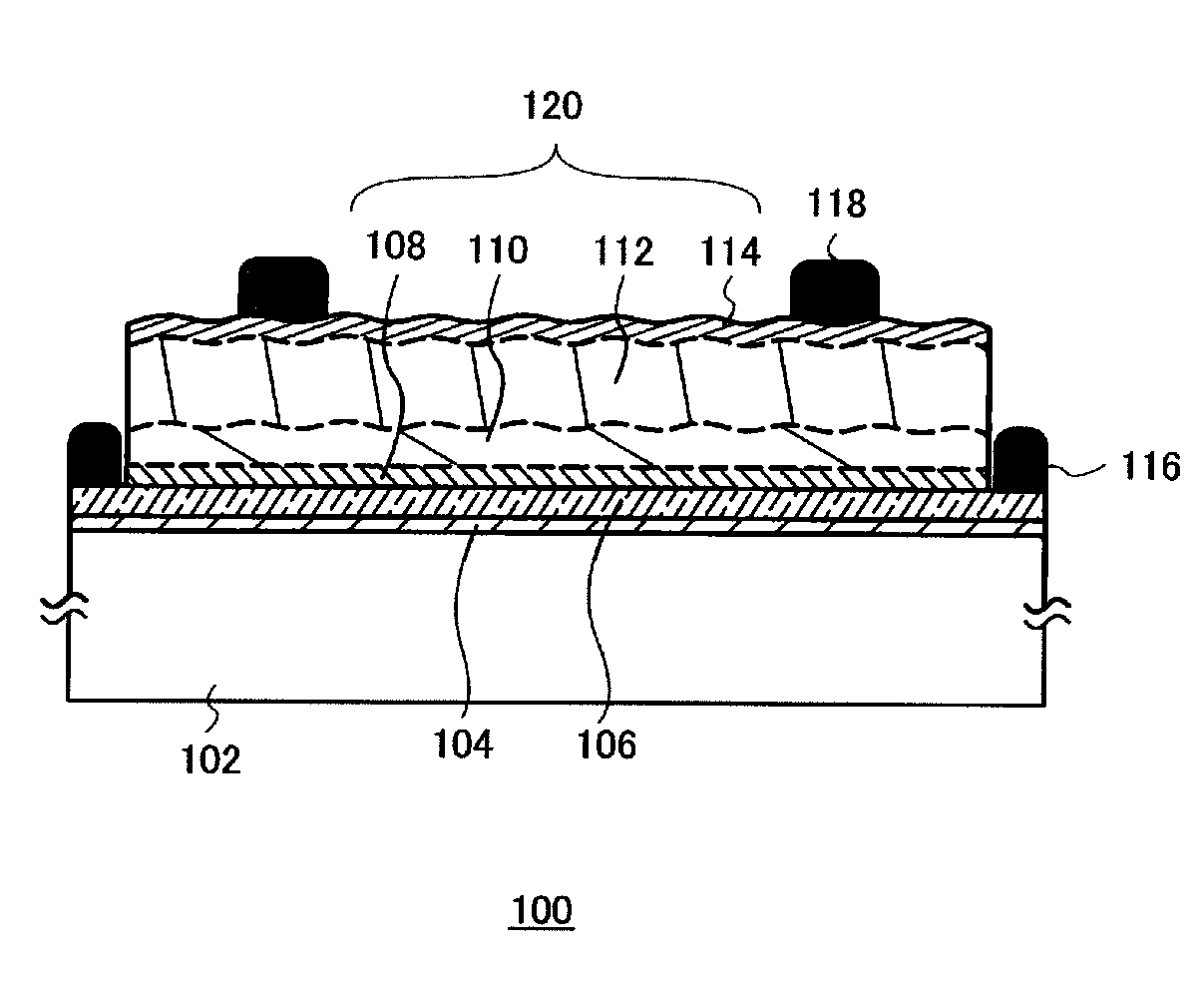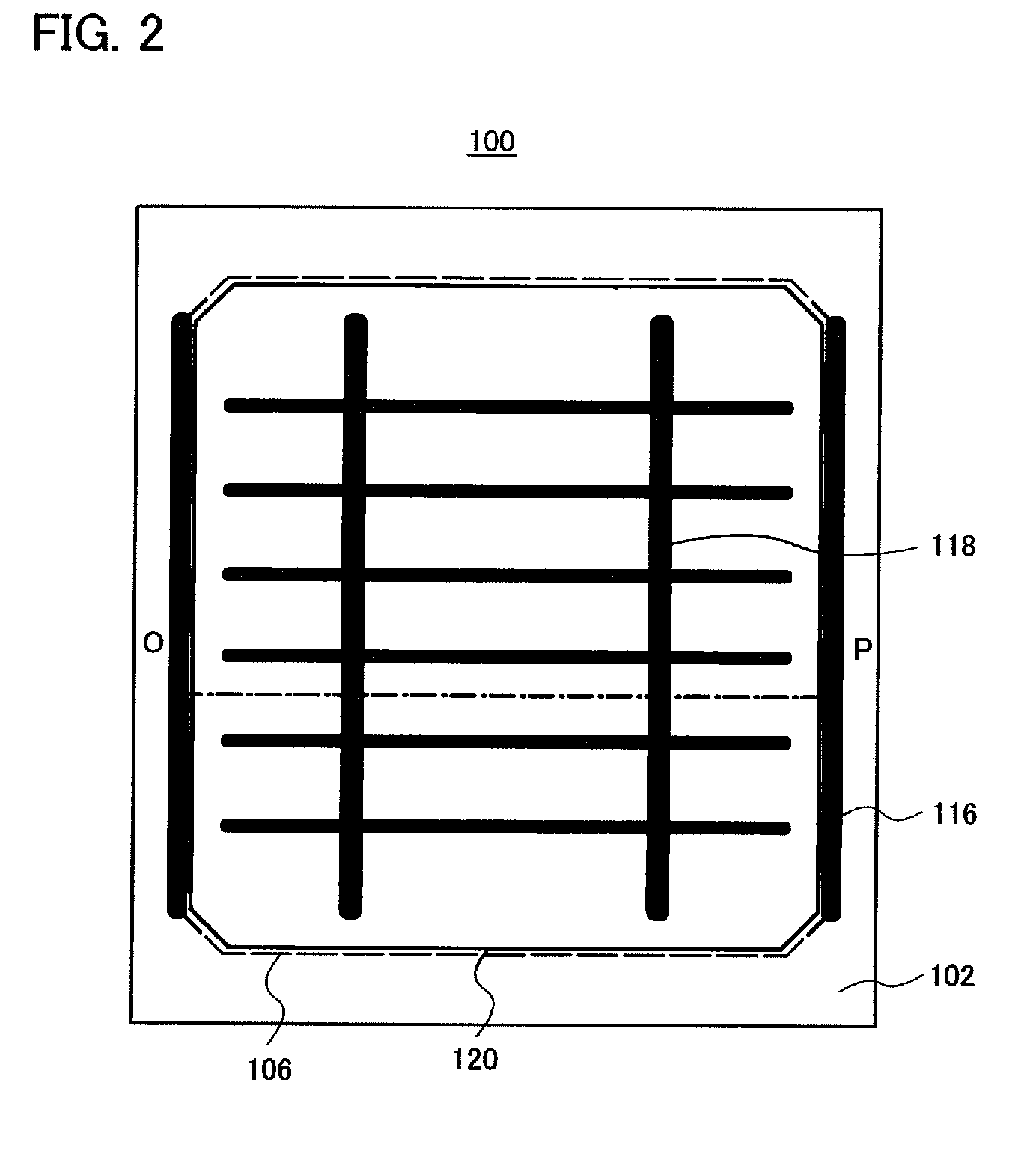Method of manufacturing photoelectric conversion device
a technology of photoelectric conversion device and manufacturing method, which is applied in the manufacture of final products, basic electric elements, climate sustainability, etc., can solve the problem of difficult for a conventional apparatus to give a large amount of current, cycle time might decrease, and the depth of ion implantation in a single crystal silicon substrate is the upper limit of the depth of ion implantation, etc. problem, to achieve the effect of improving photoelectric conversion efficiency, suppressing resource consumption, and photoelectric conversion layer
- Summary
- Abstract
- Description
- Claims
- Application Information
AI Technical Summary
Benefits of technology
Problems solved by technology
Method used
Image
Examples
embodiment mode 1
[0050]FIG. 1 is a schematic cross-sectional view of a photoelectric conversion device 100 according to this embodiment mode. FIG. 2 is a schematic top view of the photoelectric conversion device 100 according to this embodiment mode. Note that FIG. 1 illustrates an example of a cross-sectional view along a line O-P in FIG. 2.
[0051]The photoelectric conversion device 100 described in this embodiment mode includes a unit cell 120 fixed to a supporting substrate 102. The unit cell 120 includes a single crystal semiconductor layer. The unit cell 120 is provided with a first electrode 106 on the supporting substrate 102 side and with a second electrode 118 on the surface side of the unit cell 120. Moreover, an auxiliary electrode 116 is provided in electrical connection with the first electrode 106. The photoelectric conversion device 100 of this embodiment mode has a structure in which the unit cell 120 is fixed to the supporting substrate 102, and a positive electrode and a negative el...
embodiment mode 2
[0140]In this embodiment mode, an example of a method of manufacturing a photoelectric conversion device, which is different from that in Embodiment Mode 1, will be described. Specifically, the example of (1) about the formation order of the fragile layer 105, the first impurity semiconductor layer 108, the first electrode 106, and the insulating layer 104 is described in Embodiment Mode 1; now, examples of (2) to (4) are described in this embodiment mode. Note that a manufacturing process other than the formation order of the fragile layer 105, the first impurity semiconductor layer 108, the first electrode 106, and the insulating layer 104 is based on Embodiment Mode 1; therefore, description thereof is omitted.
[0141]First, the example of the aforementioned formation order (2) is described with reference to FIGS. 10A to 10D.
[0142]The protection layer 107 is formed on one surface of the single crystal semiconductor substrate 103. Then, the substrate is irradiated with ions or clust...
embodiment mode 3
[0159]In this embodiment mode, an example of a method of manufacturing a photoelectric conversion device, which is different from that in Embodiment Mode 1, will be described.
[0160]An example of a photoelectric conversion device which is formed by directly bonding the first electrode 106 and the supporting substrate 102 to each other is illustrated in FIG. 23. When the first electrode 106 has a smooth surface, specifically, when the first electrode 106 has a surface with an average surface roughness Ra of 0.5 nm or less, preferably, 0.3 nm or less, the first electrode 106 and the supporting substrate can be bonded to each other without formation of the insulating layer 104 illustrated in FIG. 1. The first electrode 106 is formed, the surface of the first electrode 106 which serves as a bonding plane is sufficiently cleaned, and then the first electrode 106 and the supporting substrate 102 are arranged in close contact to each other to form a bond. Needless to say, before bonding, th...
PUM
 Login to View More
Login to View More Abstract
Description
Claims
Application Information
 Login to View More
Login to View More - R&D
- Intellectual Property
- Life Sciences
- Materials
- Tech Scout
- Unparalleled Data Quality
- Higher Quality Content
- 60% Fewer Hallucinations
Browse by: Latest US Patents, China's latest patents, Technical Efficacy Thesaurus, Application Domain, Technology Topic, Popular Technical Reports.
© 2025 PatSnap. All rights reserved.Legal|Privacy policy|Modern Slavery Act Transparency Statement|Sitemap|About US| Contact US: help@patsnap.com



